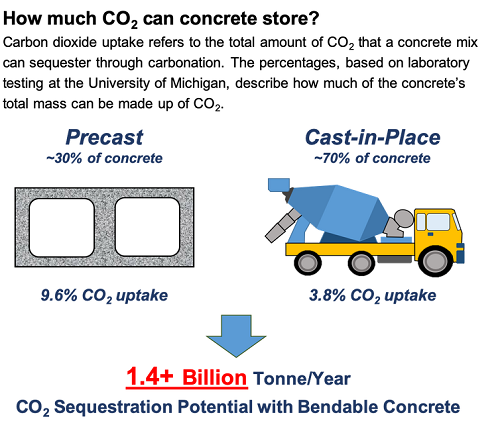 Friday, May 3, 2024
Friday, May 3, 2024  Friday, May 3, 2024
Friday, May 3, 2024 
One of the big contributors to climate change is right beneath your feet, and transforming it could be a powerful solution for keeping greenhouse gases out of the atmosphere.
The production of cement, the binding element in concrete, accounted for 7% of total global carbon dioxide emissions in 2018. Concrete is one of the most-used resources on Earth, with an estimated 26 billion tons produced annually worldwide. That production isn’t expected to slow down for at least two more decades.
Given the scale of the industry and its greenhouse gas emissions, technologies that can reinvent concrete could have profound impacts on climate change.
As engineers working on issues involving infrastructure and construction, we have been designing the next generation of concrete technology that can reduce infrastructure’s carbon footprint and increase durability. That includes CO2-infused concrete that locks up the greenhouse gas and can be stronger and even bendable.
The industry is ripe for dramatic change, particularly with the Biden administration promising to invest big in infrastructure projects and cut U.S. emissions at the same time. However, to put CO2 to work in concrete on a wide scale in a way that drastically cuts emissions, all of its related emissions must be taken into account.
Concrete is made up of aggregate materials – primarily rocks and sand – along with cement and water.
Because about 80% of concrete’s carbon footprint comes from cement, researchers have been working to find substitute materials.
Industrial byproducts such as iron slag and coal fly ash are now frequently used to reduce the amount of cement needed. The resulting concrete can have significantly lower emissions because of that change.
Alternative binders, such as limestone calcined clay, can also reduce cement use. One study found that using limestone and calcinated clay could reduce emissions by at least 20% while also cutting production costs.
Apart from developing blended cements, researchers and companies are focusing on ways to use captured CO2 as an ingredient in the concrete itself, locking it away and preventing it from entering the atmosphere. CO2 can be added in the form of aggregates – or injected during mixing. Carbonation curing, also known as CO2 curing, can also be used after concrete has been cast.